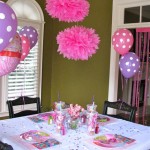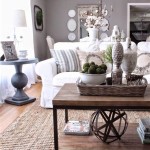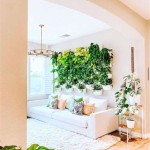```html
Interior Decor Ideas For Living Room
The living room serves as a central hub within a home, often the first space encountered by visitors and a primary area for family gatherings and relaxation. Consequently, its design and decor warrant careful consideration. Effective living room interior decor balances aesthetics with functionality, creating a space that is both visually appealing and conducive to comfortable living. This article explores various interior decor ideas for living rooms, focusing on key elements that contribute to a well-designed and inviting atmosphere.
Understanding the Room's Purpose and Layout
Before embarking on any decorating project, it is crucial to define the living room's primary function. Is it primarily a space for formal entertaining, casual family time, or a combination of both? The intended use will significantly impact furniture choices, color palettes, and overall design direction. For instance, a living room intended for frequent entertaining might prioritize ample seating arrangements and a sophisticated ambiance, whereas a family room might prioritize comfort and durability.
The existing layout of the room also plays a vital role in determining decor options. Consider the size and shape of the room, the location of windows and doors, and the placement of any existing architectural features such as fireplaces or built-in shelving. These elements influence furniture placement and the overall flow of the space. A small living room, for example, will benefit from space-saving furniture and light color schemes to create an illusion of spaciousness. A larger room, on the other hand, can accommodate more substantial furniture pieces and bolder color choices.
Analyzing the natural light within the living room is equally important. Rooms with abundant natural light can handle darker color palettes, while rooms with limited natural light will benefit from brighter, more reflective colors. Window treatments should also be considered in terms of light control and privacy. Blinds, shades, or curtains can be selected to complement the overall design scheme while effectively managing the amount of light entering the room.
Color Palettes and Material Choices
The color palette of a living room sets the tone and evokes a particular mood. Color psychology suggests that different colors can influence emotions and perceptions. For example, cool colors like blue and green tend to create a calming and relaxing atmosphere, while warm colors like red and orange can create a more energetic and stimulating environment.
Neutral color schemes, such as beige, gray, and white, offer versatility and can be easily adapted to different design styles. These colors provide a blank canvas upon which to layer more vibrant accent colors through accessories, artwork, and textiles. Monochromatic color schemes, which use variations of a single color, can create a sophisticated and cohesive look. However, it is important to incorporate texture and pattern to prevent the space from feeling monotonous.
The choice of materials for furniture, flooring, and accessories significantly impacts the overall aesthetic and functionality of the living room. Durable and easy-to-clean materials are ideal for high-traffic areas, while softer and more luxurious materials can be used in areas where comfort is paramount. For example, hardwood flooring is a classic and durable option, while plush carpeting can add warmth and comfort to a living room. Upholstery fabrics should be chosen based on their durability, stain resistance, and aesthetic appeal. Leather, linen, and velvet are popular choices for sofas and armchairs.
Incorporating natural elements, such as wood, stone, and plants, can add warmth and texture to a living room. Wooden furniture, exposed brick walls, or stone fireplaces can create a sense of connection to the outdoors. Plants not only add visual interest but also improve air quality. Choosing materials that complement each other in terms of color, texture, and style is essential for creating a harmonious and balanced living room design.
Furniture Selection and Placement
Furniture selection is a critical aspect of living room decor. The size and style of furniture should be appropriate for the size and style of the room. Overly large furniture can overwhelm a small space, while undersized furniture can make a large room feel empty and impersonal. Consider the scale of the furniture in relation to the room's dimensions and architectural features.
The placement of furniture is equally important. A well-arranged living room promotes conversation and creates a comfortable flow of traffic. The focal point of the room, such as a fireplace or a large window, should be considered when arranging furniture. Sofas and armchairs should be positioned to encourage interaction and create a sense of enclosure. Coffee tables and side tables should be placed within easy reach of seating areas.
Creating distinct zones within a living room can enhance its functionality. A reading nook, a conversation area, and a media center can be defined through furniture placement and the use of rugs and accessories. Rugs can anchor furniture groupings and define specific areas within the room. Lighting is also an essential element in defining zones and creating ambiance. A combination of ambient, task, and accent lighting can be used to illuminate different areas of the living room and create visual interest.
Consider the use of multi-functional furniture pieces to maximize space and versatility. Sofa beds, ottomans with storage, and nesting tables can provide additional seating, storage, and surface space without sacrificing valuable floor space. These pieces are particularly useful in smaller living rooms where space is at a premium.
Lighting Strategies
Effective lighting is paramount for creating an inviting and functional living room. A layered approach to lighting, incorporating ambient, task, and accent lighting, provides flexibility and allows for adjusting the mood and atmosphere of the room. Ambient lighting provides overall illumination, task lighting provides focused light for specific activities, and accent lighting highlights architectural features or artwork.
Ambient lighting can be achieved through ceiling fixtures, such as chandeliers, pendant lights, or recessed lighting. The choice of fixture should be appropriate for the style and scale of the room. Task lighting can be provided by floor lamps, table lamps, or sconces. These fixtures should be positioned to provide adequate light for reading, working, or other activities. Accent lighting can be achieved through spotlights, track lighting, or picture lights. These fixtures can be used to highlight artwork, architectural details, or decorative objects.
The color temperature of light bulbs can also influence the mood of the living room. Warm light bulbs (2700-3000K) create a cozy and inviting atmosphere, while cool light bulbs (4000-5000K) create a brighter and more energetic atmosphere. Dimmers can be used to adjust the intensity of lighting and create different moods. Smart lighting systems allow for controlling lighting remotely and automating lighting schedules.
Natural light should be maximized whenever possible. Avoid blocking windows with heavy curtains or furniture. Mirrors can be used to reflect natural light and brighten up dark corners. Light-colored walls and ceilings can also help to reflect light and create a more open and airy feel.
Accessorizing and Personal Touches
Accessories and personal touches are what truly transform a living room from a generic space into a personalized haven. These elements reflect the homeowner's personality and style and create a sense of warmth and comfort. Artwork, photographs, decorative objects, and textiles can all be used to add character and interest to the living room.
Artwork should be chosen based on personal taste and should complement the overall design scheme of the room. Consider the size, color, and style of the artwork in relation to the walls and furniture. Photographs can be used to personalize the space and showcase memories. Arrange photographs in groupings or create a gallery wall to add visual interest.
Decorative objects, such as vases, sculptures, and candles, can add texture, color, and visual interest to the living room. Arrange decorative objects on shelves, tables, or mantels. Textiles, such as pillows, throws, and rugs, can add warmth, comfort, and pattern to the living room. Choose textiles that complement the color palette and style of the room.
Personal touches, such as books, collectibles, and souvenirs, can add character and personality to the living room. Display these items in a way that is both visually appealing and meaningful. Avoid cluttering the space with too many accessories. A few well-chosen pieces are more effective than a large collection of random items.
Consider incorporating elements that reflect the homeowner's hobbies and interests. A music lover might display a collection of records or instruments, while a travel enthusiast might display souvenirs from past trips. These personal touches can make the living room feel more unique and inviting.
Ultimately, successful living room interior decor balances functionality, aesthetics, and personal expression. By considering the room's purpose, color palette, furniture selection, lighting strategies, and accessories, it is possible to create a living room that is both visually appealing and conducive to comfortable living.
```
Living Room Decor Ideas For Your Home Design Cafe

77 Best Living Room Decor Ideas 2025 Unique

How To Decorate A Living Room 11 Designer Tips Houzz
:strip_icc()/cdn.cliqueinc.com__cache__posts__212361__-2030968-1483470364.700x0c-8571e60cad7b42a981ab29ae10b5c153-497b002f87af4747b2ab38b560e7c0fd.jpg?strip=all)
How To Decorate A Living Room 20 Ideas And Common Mistakes

25 Living Room Interior Design Ideas Havenly Apartment Classic Furniture Styles

Beautiful Living Rooms Designs Ideas 10 Unique And Easy Design For

100 Living Room Interior Designs Designcafe

31 Living Room Ideas From The Homes Of Top Designers Architectural Digest

100 Living Room Decorating Ideas Design Photos Of Family Rooms

Liven Up Your Living Room With These Interior Design Ideas Goodhomes Co In







